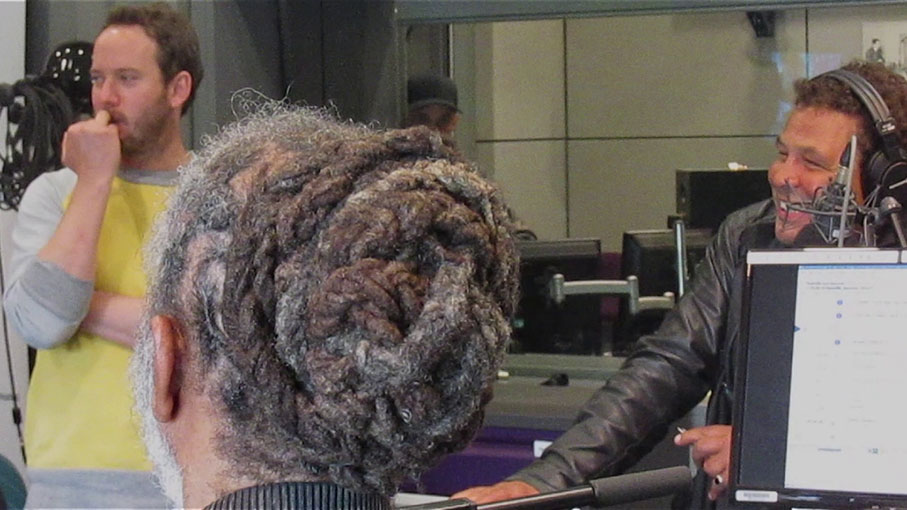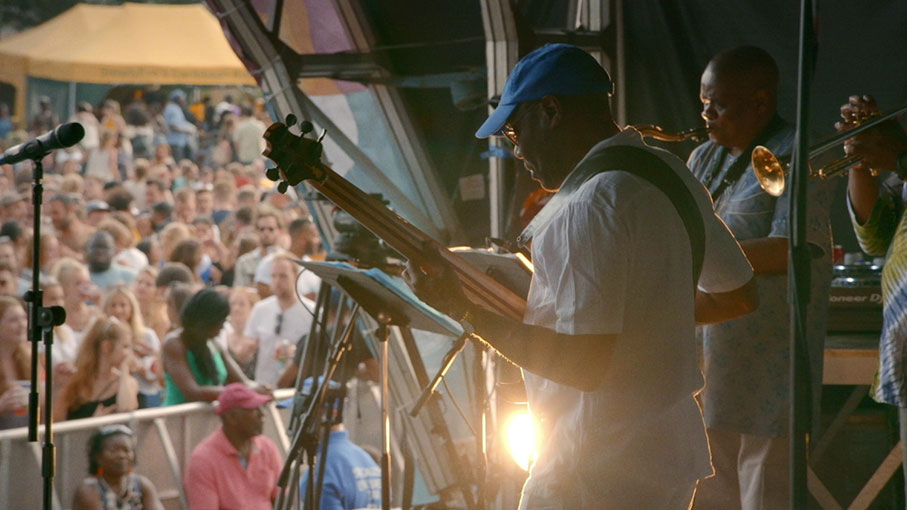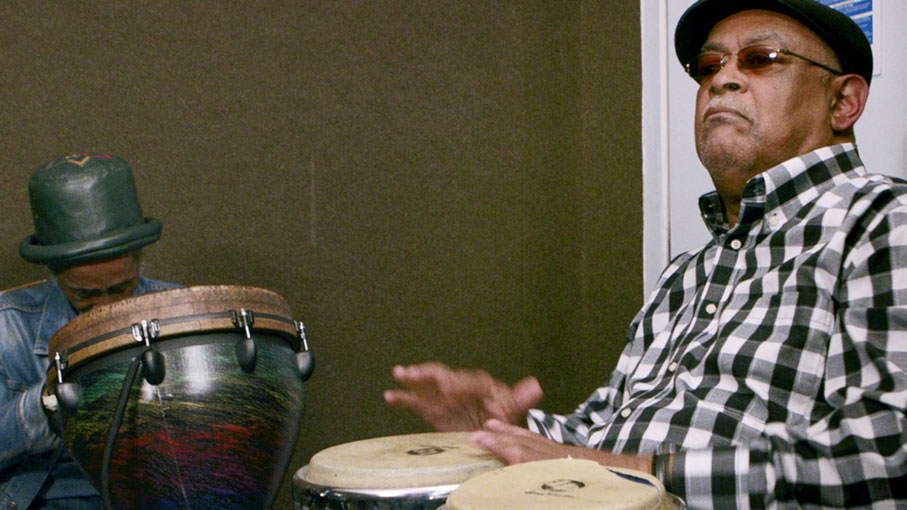|
There are plenty of bands whose influence far outweighs their commercial success, if they ever had any to speak of. It’s as if fans were a secret club to which there turned out to be more initiates than you had ever expected. Thus, Cymande, pronounced “See-MAHN-day”. Formed in 1971, their initial incarnation lasted just three years, though there were revivals in 2006 and again in 2012, the latter continuing to the present day, although the band members are now in their eighth decades. Whole subgenres of music have been influenced by them, yet many have not heard of them. I confess that I am one of the latter, though I am of age to have been listening to music in the early 1970s. They were rarely if ever played on the radio (you wonder if John Peel might have given them an airing, though there’s no indication whether or not he did) and never saw the light of day on Top of the Pops. Their commercial success was in the USA rather than in their home country. As a result of this, they got to tour with Al Green, then at the height of his own popularity.

Cymande was founded by bassist Steve Scipio and guitarist Patrick Patterson. They were both Londoners of Caribbean birth (Patterson from Guyana, Scipio also Guyanese but born in Anguilla) and grew up on the same street to each other. Their first band was a jazz-fusion outfit called Metre, so called due to a penchant of playing in unusual time signatures. The full lineup of Cymande numbered eight or nine men, including percussionists and brass and horn players as well as vocalists. As well as Scipio and Patterson, interviewed here are Sam Kelly (drums), Pablo Gonsales (percussion, mainly congas), Derrick Gibbs (saxophone) and Michael “Bammi” Rose (flute and saxophone). This documentary specifically cites the track “Bra” (patois for “brother”, nothing to do with lingerie) as a major Cymande work, particularly the breakdown in the middle featuring Scipio’s bass – and director Tim Mackenzie-Smith emphasises this straight away by beginning the first performance footage with a close-up of Scipio playing this on his five-string. This, and other parts of the band’s repertoire were used as breakbeats by hip-hop DJs and rappers, and the rare groove scene was heavily influenced by them. Others influenced included the KLF (themselves subject of another BFI release, 23 Seconds to Eternity) and the French MC Solaar, who used their music as the basis of his own track “Bouge de là” and kicked off a whole school of French hip-hop. Only briefly mentioned in the film is the fact that The Fugees used a sample of “Dove”, which resulted in a copyright infringement case. However, many people picked up on the samples and sought out the originals, so bringing Cymande’s music to a new audience. “Bra” featured in, amongst other films, two by Spike Lee, Crooklyn and 25th Hour.
Getting It Back is a documentary more or less in two parts. The first half hour runs through the history of the band from formation to breakup, while the rest of this ninety-minute feature talks about the aftermath, with some members carrying on with new musical projects and others leaving the industry, at least until the reunions. The rest of the film is devoted to the band’s continuing influence, with celebrity fans introduced by captions which include when they first discovered Cymande. These fans include fellow musicians and DJs. The latter includes Craig Charles, who is both interviewed and filmed while he welcomed the band into the studio for a session on his BBC 6 Music Funk and Soul Show. The film puts the band’s story in the context of prevalent racism in the UK, and race riots in London – archive footage provides some distinctly unsavoury examples of the former.

There’s clearly a lot of affection for Cymande and their music, and a warmth to the film as a whole. Other than the performance footage, there’s not a lot about the music itself, more about the music it influenced than the influences on it, and quite little about the main protagonists’ lives outside playing. But an hour and a half passes by easily, and if this film does make you want to seek out the music of this very influential band, then it has served its purpose.
Percussionist Pablo Gonsales (who is interviewed here) died in 2020 and the film is dedicated to him.
Getting It Back: The Story of Cymande is released on Blu-ray by the BFI following the film’s short run in cinemas. The disc is encoded for Region B only. The film begins with a (justified) advisory for racist language, which is the main reason for its 12 certificate, though someone missed an Oedipal noun dropped by Cut Chemist in a deleted scene.
The transfer is in the ratio of 1.78:1 and runs at twenty-five frames per second instead of the usual cinema speed of twenty-four, leading one to suspect that the small screen was this film’s largely intended destination. Getting It Back mixes newly shot footage, mostly of interviews, with archive, much of the latter being presented in 4:3. Given that, apart from that archive material, this production has existed in the digital realm from production to presentation, there should be nothing untoward about it, and there isn’t.
There are two main soundtrack options: DTS-HD MA 5.1 and LPCM 2.0, the latter playing in surround, with the rear speakers mostly devoted to music. I detected hardly any difference between the two, with the LFE channel of the former making not doing much to add to the prominent bass of much of the music. So the choice is yours. An audio-descriptive track is included in Dolby Digital 2.0, and there are English subtitles for the hard-of-hearing available on the feature only. There are some fixed subtitles at the very end as a conversation drops in volume as two men walk away from the camera.
Steve Scipio and Patrick Patterson Q & A (34:22)
Jason Solomons, who outs himself as a Cymande fan from way back, interviews the Cymande co-founders in NFT3 at the BFI Southbank in December 2023. This follows a showing of the film, though the audience had vacated when this Q&A was recorded, shot also by Tim Mackenzie-Smith. There’s more about the two men’s family background than there is in the main feature, and more musicological stuff, which makes this a useful addition to the film itself. Solomons points out that there have been documentaries about other UK subcultures, but this is possibly the first about this one.

Extended Clips and Deleted Scenes (14:21)
Six of them, chosen by Tim Mackenzie-Smith, with a Play All option. These are: “The Genesis of ‘Bra’” (2:27), “Cut Chemist Listens to Cymande” (2:53), “DJ Hollywood ‘Bra’ Rap” (1:15), “Jazzy Jay Cymande Mix” (0:46), “Ruthless Rap Assassins (extended feature)” (5:18) and “Cymande’s School Days” (1:39). As usual with these things, you can see why these have been removed from a not especially long feature film, but good to have these available.
Black Music Parrty (6:37)
From circa 1975, this is the only known live footage of Cymande from the 1970s, shot on videotape with noticeable tracking errors. This was made by the long-defunct Intervision for showing in clubs as a fill-in if they had no live acts, as their licenses allowed them to stay open late if there was live music, or as-live music in this case. Cymande perform two songs.
UK theatrical trailer (1:50)
A briskly-edited summary of the film, available with both DTS-HD MA 5.1 and LPCM 2.0 soundtracks, though as with the feature there’s little or not difference between the two.
Booklet
The BFI’s booklet, available with the first pressing only of this release, runs to thirty-six pages. First up is an essay by journalist and broadcaster Kevin Le Gendre (an interviewee in the film). He begins by discussing MC Solaar’s “Bouge de là” and his first hearing of it – when the idea of hip-hop in French seemed something quite inconceivable – which led him to “The Message”, from which it was sampled, and the rest of Cymande’s output. His piece after this is less about the band but an appreciation of the film, though none the worse for that.

Next up is Tim Mackenzie-Smith and a one-page account of the making of Getting it Back. He was a longtime fan of the band and first approached Scipio and Patterson about making the documentary in 2017, which resulted in his writing a treatment for the film. Scipio and Patterson now follow with “The Roots of Cymande”. Both arrived in England from the West Indies with their parents and talk about the lack of opportunities for black people, both professionally and educationally, with many perfectly able children shuttled off into ESN (educationally subnormal) schools. They refer to the then very small black British musical scene and how Cymande fitted into it, in the face of music-industry indifference and outright racism.
Taking that last point up is Greg Wilson (also an interviewee in the film) with “Return to Promised Heights”. This is an overview of black British music, beginning with the breakthrough of two racially-mixed groups reaching number one in the 1960s, The Foundations with “Baby, Now That I’ve Found You” and The Equals with “Baby, Come Back”. (The latter’s singer, Eddy Grant, would have solo success over a decade later with “I Don’t Wanna Dance” and “Electric Avenue”.) Then there was another mixed-race band, with a guitar virtuoso at its head, namely The Jimi Hendrix Experience. Wilson identifies Osibisa, who were part-African (Ghanaian) in origin, as Cymande’s closest contemporaries, though they did have a top-twenty hit in 1976 with “Sunshine Day”. As for Cymande, Wilson talks about the influence of producer John Schroeder, who had previously written hit singles for Helen Shapiro and had produced Status Quo’s psychedelic-era “Pictures of Matchstick Men”. (Schroeder appears in the documentary in archive footage, talking about he first heard Cymande by hearing them almost by accident, in rehearsal, and being immediately struck by them.) Wilson then talks about the band’s history and how he first came across them, in 1974 at age fourteen, on a compilation LP called Super Bad. He then discusses how hip-hop picked up on Cymande, including the band he was managing at the time, the Ruthless Rap Assassins, who are also interviewed in the film. Also in the booklet are notes on and credits for the special features, and plenty of stills.
Getting It Back continues a run of intriguingly diverse music-themed releases from the BFI, this one shining a light on a neglected if highly influential corner of the black British music scene. This Blu-ray presents the documentary well and the extras, the booklet especially, provide the context you may need.
|